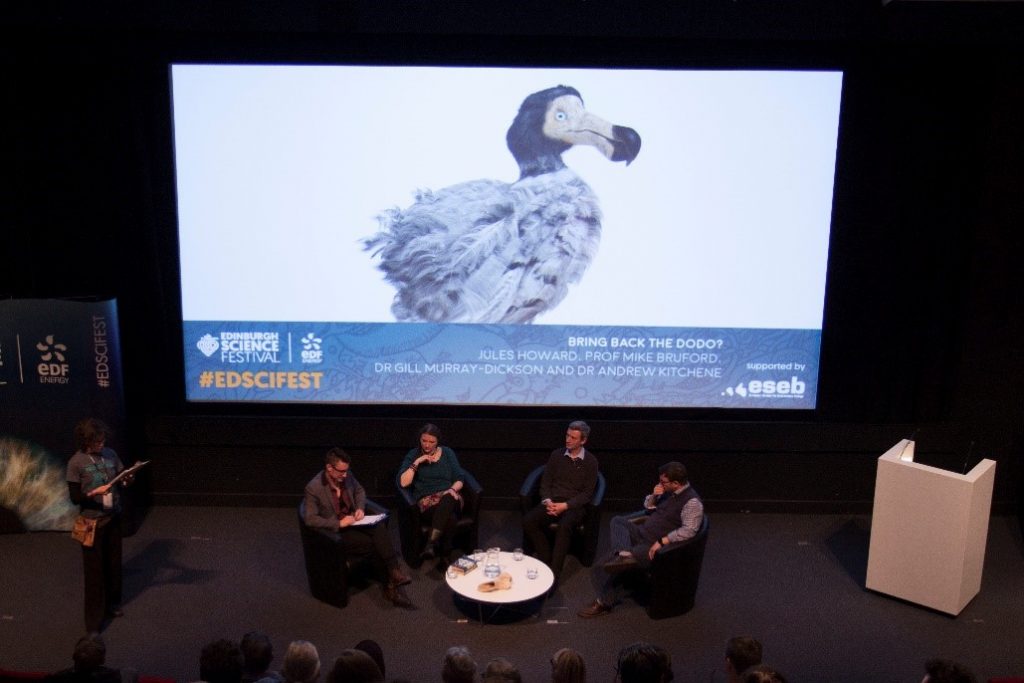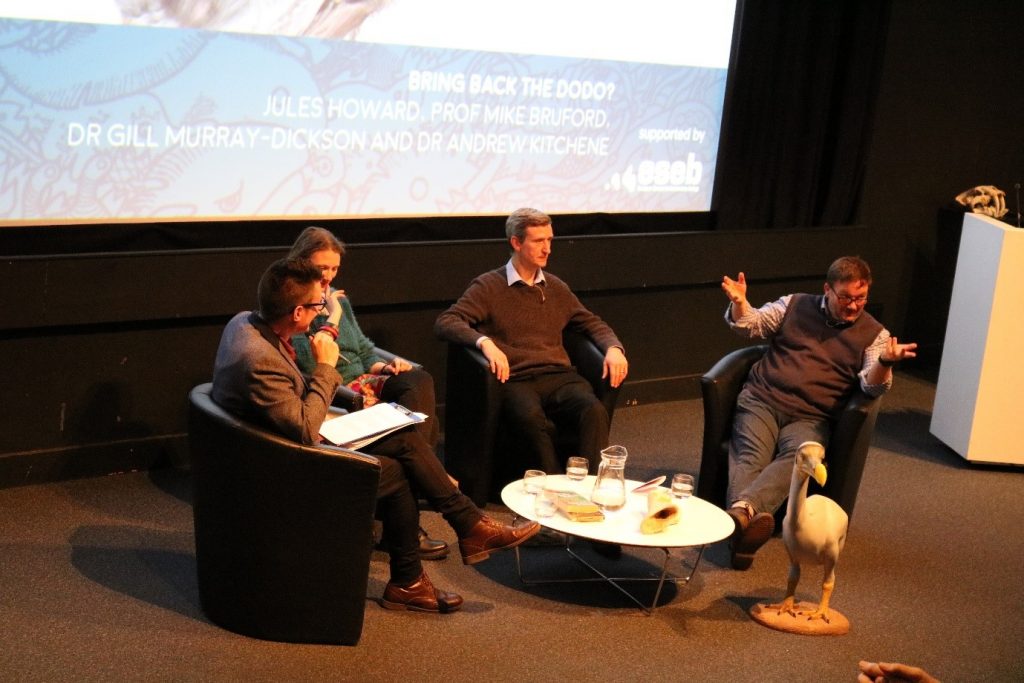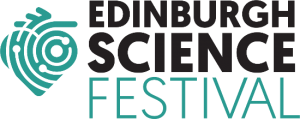Can we bring back extinct species using DNA? Should we? Why else might we archive genetic material? These questions and others were addressed by several members of the CryoArks team at an event at this year’s Edinburgh Science Festival.

‘Bring back the Dodo?’ explored the topic of de-extinction in pop-culture and highlighted the role biobanking can play in real-world conservation. The event was hosted by zoologist and presenter Jules Howard, at the National Museum of Scotland. Examples from famous films, TV and books were used to stimulate discussions about resurrection biology research and invite questions from the audience. Prof Mike Bruford (director of the Frozen Ark project and the CryoArks Biobank), Dr Andrew Kitchener (NMS natural sciences curator), and Dr Gill Murray-Dickson (NMS/RZSS biobank research fellow) shared their knowledge and experience about the technical challenges of preserving high quality genetic material, the role of biobanks in wildlife conservation and research, and how accurately this type of science is portrayed in popular culture.
Whether we could or should bring back dinosaurs, mammoths, or indeed, dodos is always a hot topic for debate and the evening discussions were both lively and informative.
If you missed the event, you can listen to the evening’s discussion here.

A visit to your local museum might bring you closer to several species that are now extinct, including the dodo, and maybe make you think…how would I bring them back? And how would I manage them if I did?
For more information about the CryoArks initiative, head to the menu above. To learn more about how biobanks are helping conservation and preventing species extinctions, visit the RZSS (Royal Zoological Society of Scotland) website and read about the work of RZSS WildGenes (or better still, go to Edinburgh zoo!). Don’t forget to check out future events run by the Edinburgh Science Festival, and for more information about the exciting work of Jules Howard, visit his website.



